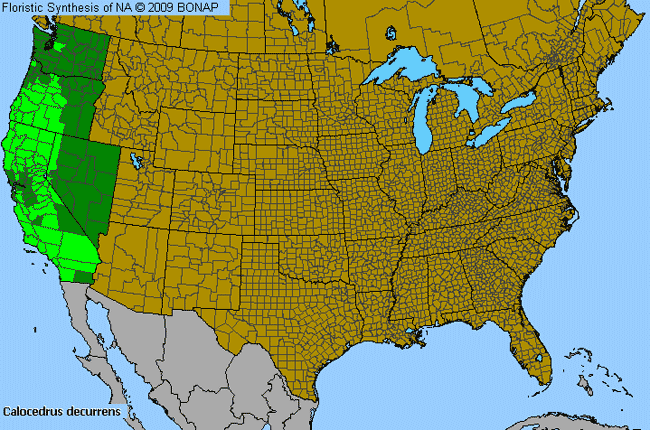Incense-Cedar (Calocedrus decurrens)

Family:
CUPRESSACEAE
Genus: Calocedrus
Species: Incense-Cedar (Calocedrus decurrens)
Alternative Names: Libocedrus decurrens, Libocedrus calocedrus
Genus: Calocedrus
Species: Incense-Cedar (Calocedrus decurrens)
Alternative Names: Libocedrus decurrens, Libocedrus calocedrus
Incense-Cedar Species Description

This species is native to North America north of Mexico.
Allergenicity: Incense-Cedar (Calocedrus decurrens) is a mild allergen.
Pollination: Occurs in following seasons depending on latitude and elevation: Spring.
Gymnosperm: Any plant such as a conifer whose seeds are not enclosed in an ovary.
Tree: A large plant, not exactly defined, but typically over four meters in height, a single trunk which grows in girth with age and branches (which also grow in circumference with age).
Weed: Any plant growing in cultivated ground to the injury of the crop or desired vegetation, or to the disfigurement of the place; an unsightly, useless, or injurious plant.
Perennial: Living for many years.
Woody Stem: Non-herbaceous. Lignified.
Evergreen: Retaining leaves throughout the year including changing seasons.
Incense-Cedar Species Usage

Honey/Bee Pollen: A plant used as a source of food for Honey Bees, and may be a flavor of honey such as clover or alfalfa.
Butterfly Plant: A plant that is known to attract butterflies.
Related Links

More Incense-Cedar (Calocedrus decurrens) imagesby Jessie M. Harris from BONAP










